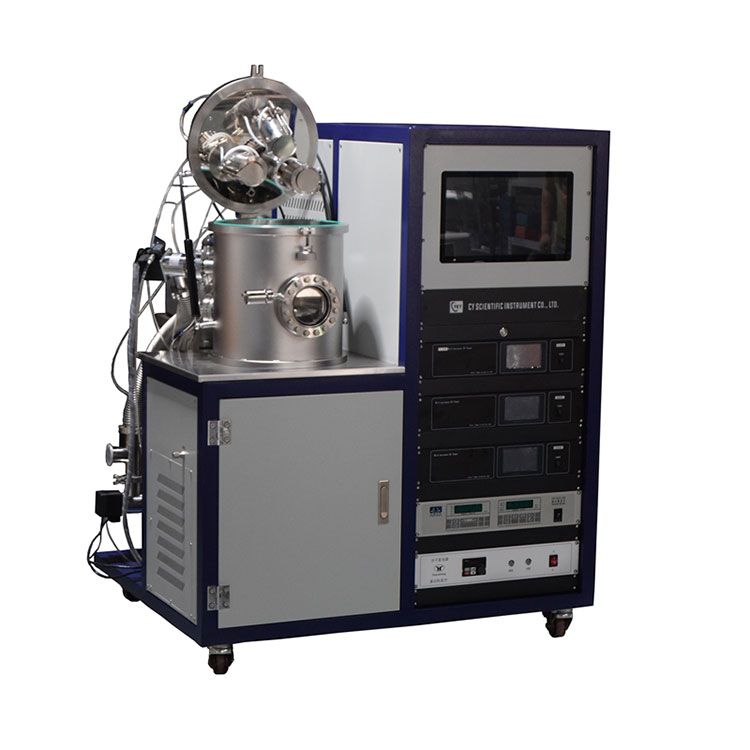Magnetron sputtering coater is characterized by setting up a circular magnetic target on the cathode surface to control the movement of the secondary electrons. The secondary electrons generated by ion bombardment on the target surface are accelerated by the electric field in the dark region of the cathode and fly to the anode. In fact, any sputtering device has an additional magnetic field to extend the travel of electrons towards the anode. The aim is to increase the plasma density and improve the sputtering efficiency by making electrons generate several collision ionization times as much as possible. But the circular magnetic field used by magnetron sputtering coater has a more rigorous control on the secondary electrons.
The circular magnetic field used by magnetron sputtering forces the secondary electrons to jump around the circular magnetic field. Accordingly, the region controlled by the circular magnetic field is the region with the highest plasma density. During magnetron sputtering, argon gas can be seen to emit a strong light blue glow at this position, forming a halo. The target under the halo is the most heavily bombarded by ions, sputtering a circular groove. The circular magnetic field is the orbit of the electron, represented by the circular glow and grooves.

The lower energy secondary electrons circulate in the closed plasma close to the target, and the distance is long enough for each electron to increase the chance of ionization of the atom, and only after the energy of the electron is exhausted, it can escape from the target surface and fall on the anode (substrate), which is the main reason for the low temperature rise of the substrate and little damage. The high density plasma is bound near the target surface by electromagnetic field and does not contact the substrate. In this way, the positive ions produced by ionization can effectively bombard the target surface, and the substrate is protected from plasma bombardment. The probability of collisions between electrons and gas atoms is high, so the gas ionization rate is greatly increased.
Magnetron sputtering targets can be roughly divided into cylindrical targets and planar targets. The cylindrical target principle is simple in structure, but its shape limits its use. In industrial production is mostly used in rectangular plane target, at present, the length of 4m rectangular target is used for plating window glass heat insulation film, so that the substrate continuously passed by the rectangular target below, not only can be plated large area of window glass, but also suitable for plating various film layers in the roll of polyester belt. There is also a sputtering gun (S-gun), its structure is more complex, generally with planetary fixture use, less application.
Once the sputtering groove of the magnetron sputtering target penetrates the target, the whole target will be scrapped, so the utilization rate of the target is not high, generally less than 40%, which is the main disadvantage of magnetron sputtering.
Copyright © Zhengzhou CY Scientific Instrument Co., Ltd. All Rights Reserved Update cookies preferences
| Sitemap | Technical Support: 